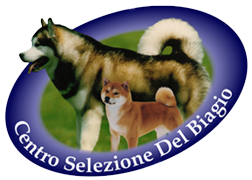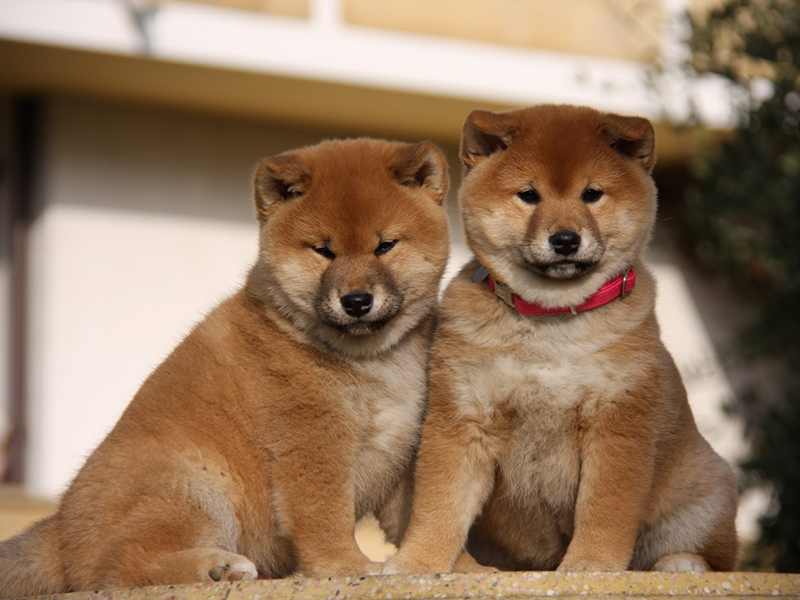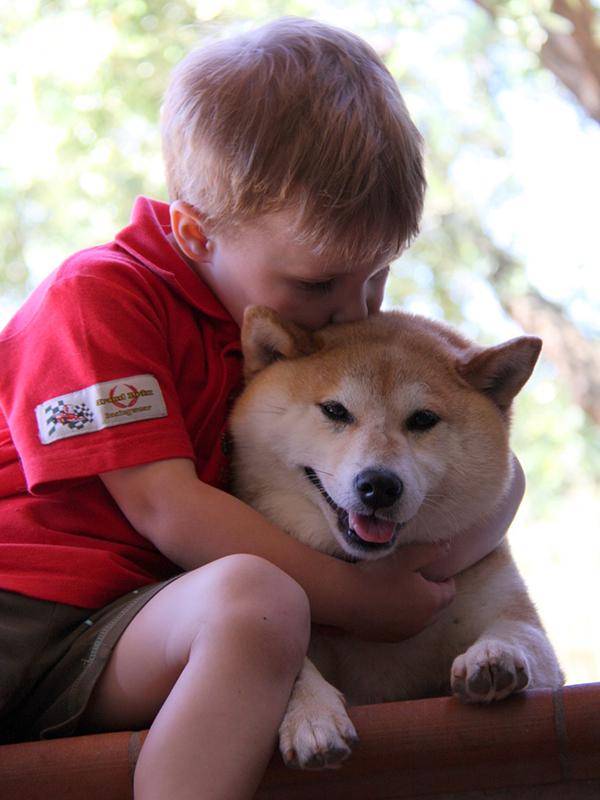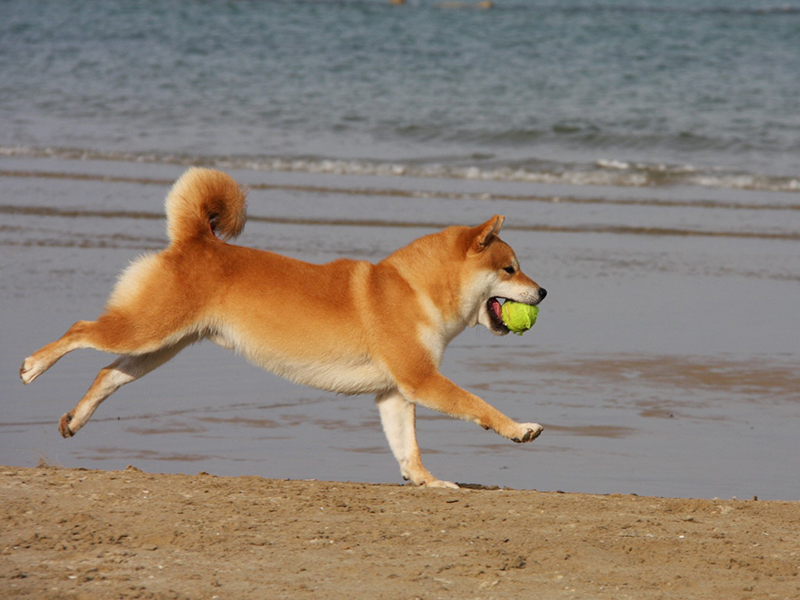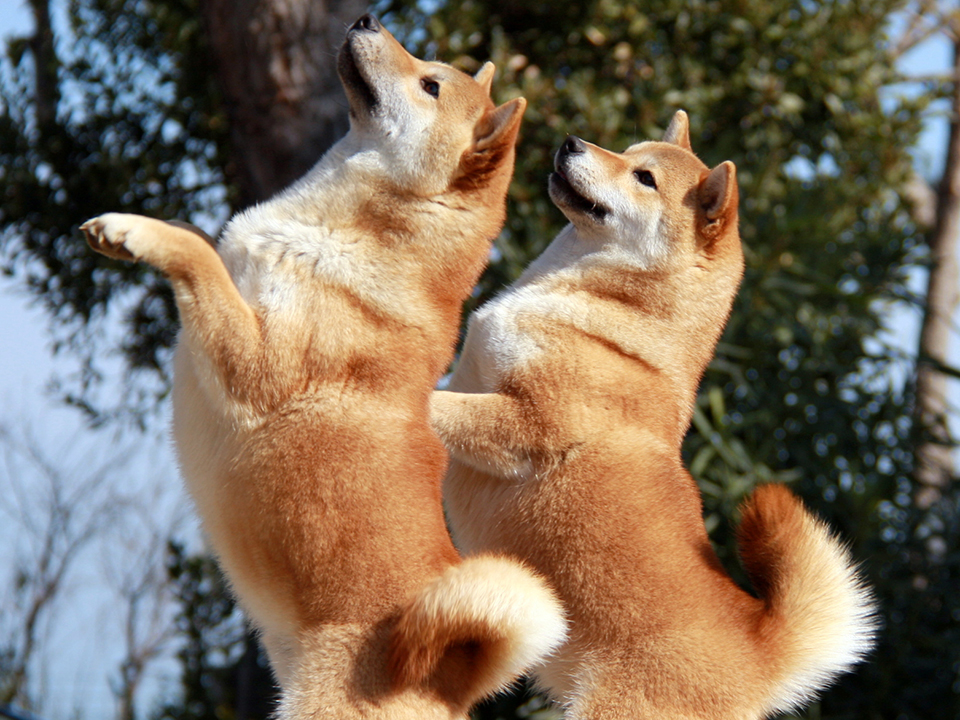
THE STORY
It seems that this Japanese dog arrived from China with the first human occupants, as the archaeological finds, dating back between 6000 and 300 before Christ, demonstrate. He was considerably different from the European dogs of the same period: his size was small and he could be identified, thanks to the particular shape of his skull, as a dog of the "Spitz" type. Immigrations during the YAYOI period (three centuries B.C.) contributed to introduce other peculiarities: dogs arriving during that age fixed a precise type with sharpened ears and a rolled up tail. They were used for hunting; deer, bears, small game and birds were their prey. The hunt and the game varied according to the regions, so did the size of the dogs, but their general feautures didn't.
Despite a curiously scarce iconography for Japan, the dog accompanies man throughout its history: the darkest hours begin with the end of Japanese isolation, imports of foreign breeds, in the nineteenth century, become frequent and the dog local is in danger of disappearing. The reaction will have to wait for the beginning of our century. In parallel with a nationalist movement for the preservation of Japanese identity, some dog lovers undertake a detailed census of native dogs (JI-NU). The geographical classification of the different Japanese dog breeds dates back to this era: Akita's dog, Shikoku, Hokkaido, etc ... The Shiba, on the other hand, is not nominally connected to a region; according to the interpretations, Shiba can mean small size or bush dog. Contemporary Shiba has its origins in the reunification of several ancient breeds, which were significantly different, depending on the region, in size, color and morphology. These small indigenous breeds were grouped under the name of Shiba by Dr. Saito. The creation in 1932 of "NIHON KEN HOZONKAI" also called "NIPPO" (Association for the conservation of the Japanese dog) produces the recognition of SHIBA by the Japanese government as a "National Monument" in 1936. Thanks to this recognition, the breed is now thought to be out of danger, but the aftermath of the World War with its aftermath of horrors once again almost extinguishes it. It is from 1948, with the resumption of NIPPO activities, that Japanese breeders collect the surviving bloodlines to restructure and save the breed. Date of publication of the valid original standard: 16 June 1992. Use: hunting dog for birds and small animals, companion dog.
Finally in 1934 the breed standard was unified. In 1937 the Shiba was designated as a national monument, after which the breed continues to be bred and improved to become the superb breed known today. The Shiba Inu (whose name comes from a dialectal form of the province of NAGURO which means "small dog" is at the same time the smallest and oldest among the Japanese Spitz, so much so that its origin can be placed between 6000 and 300 BC
The breed, as we know it today, is the result of a selection of all the small Japanese dogs coming from the mountainous regions of the country: strong subjects, hardened in difficult climates, in cold winters and nonetheless lovers of the outdoors, present in many prefectures such as FUKUSHIMA, NIIGATA, GUMMA, YAMANASHI, NAGANO and GIFU. The Shiba, traditionally used as pets, have always been appreciated as hunting auxiliaries, especially in that to the small deer, but sometimes they were used (like the more cousin Akita) even to face the bear! In their past there are SAN'IN, MINO, and SHINSHU. SAN'IN is in turn the descendant tooth of even older breeds, the SEKISHU and the IMBA, from the provinces of SHIMAN and TOTTORI.
From that of GIFU came the MINOs, while from the province of NAGANO, and descendants of the MIKAWA, the SHINKU came. These were dogs with even sensitive differences: the former were for example larger than the current Shiba, the latter were significantly smaller and were characterized by the SASKI-O (hanging tail). The preferable color of the Shiba is red, even if the SAN'IN were stained, with or without white socks. The stop is characteristic of SAN'IN, the ears and eyes of MINO. The main colors of the Shiba are: Red (Aka-Inu), Sesame (Aka-goma), Black-Red, which provides White spots on the feet, chest, tail, Black and Black-Sesame, obtained from the mixture of Red, White and Black (Kuro-goma). The least loved and least appreciated at the exhibition level but nevertheless admitted is White. Overall, these dogs must have the appearance of a fox.
From the past they inherited a genetic tare: the lack of teeth (the standard provides for up to 4 missing teeth).
CURRENT SITUATION
Currently the Shiba continues to be one of the favorite dogs in his country; it is present in the city as well as in the countryside and is commonly considered as a companion dog.
Traditionalism, the ultra-nationalism of certain breeders are as many obstacles to be overcome in order to import a Shiba of good selection. However, the patient work of relationships and knowledge allows the most determined breeders to obtain quality subjects. In the United States, Great Britain and Australia it is one of the successful breeds and the growing popularity multiplies the happy owners of this born seducer.
This is not yet the case on the European continent; little by little the Shiba shyly aims its muzzle under our skies. Scandinavia, Belgium, Holland and Germany have an evolving capital, but in those countries it is essential to diversify the lines of origin. Serious breeders work towards this by importing and exchanging new bloodlines between them. Following Italy, Spain and France are fully joining this group of fans. It is healthy for the breed that things do not develop at an excessive speed but it must be recognized that this dog has multiple qualities and an undoubted charm.

